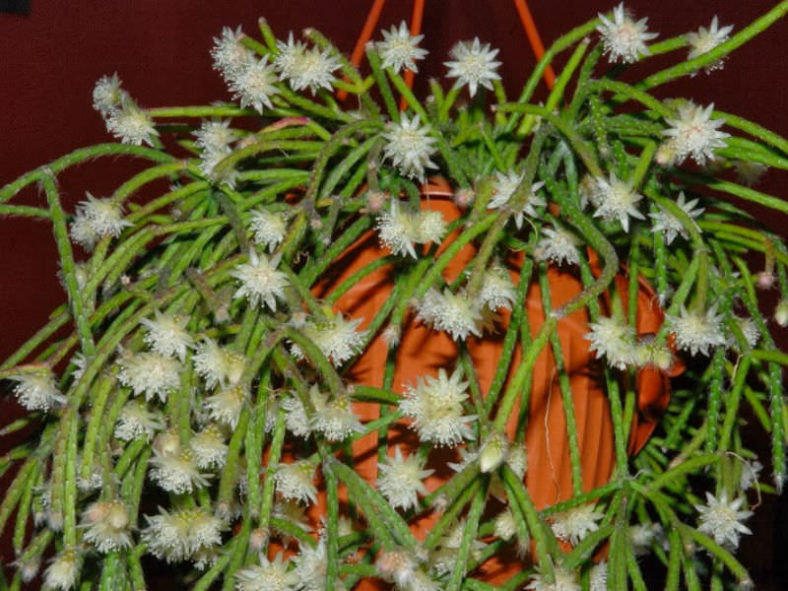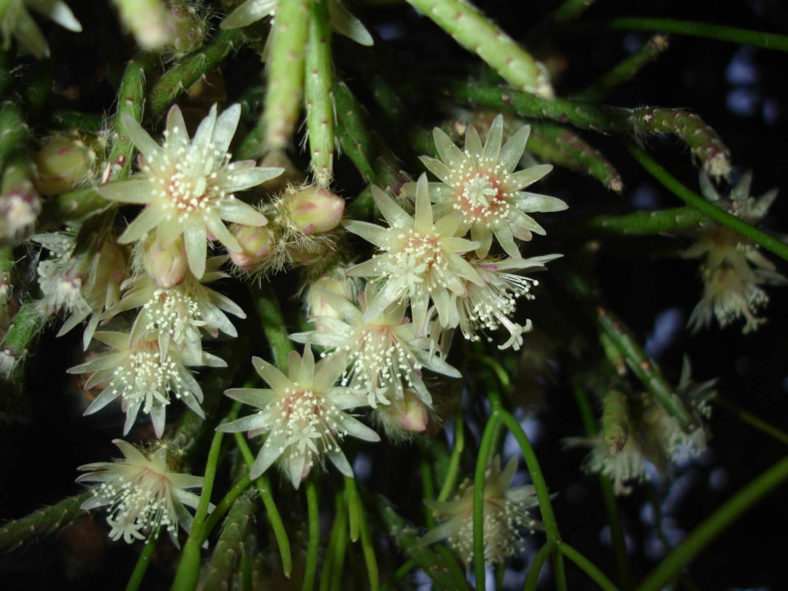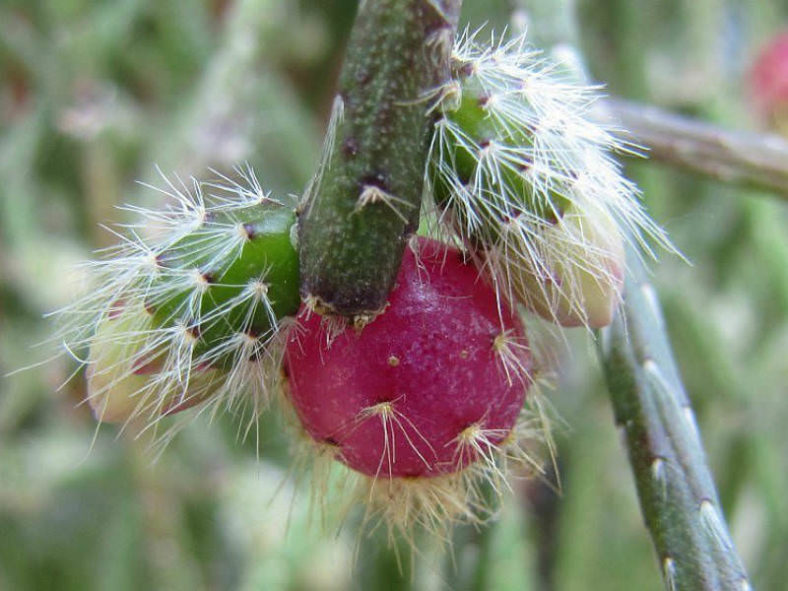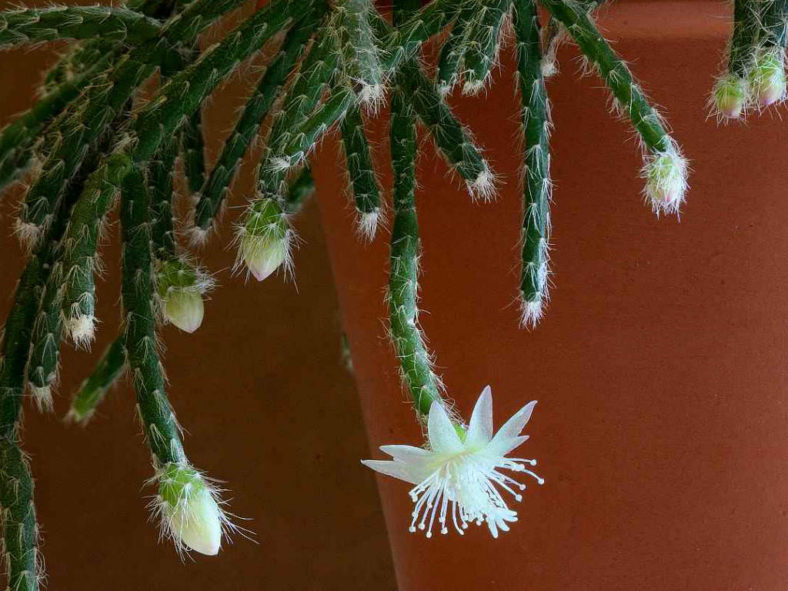Scientific Name
Rhipsalis pilocarpa Loefgr.
Common Name(s)
Hairy Stemmed Rhipsalis, Hairy-Fruited Wickerware Cactus
Synonym(s)
Erythrorhipsalis pilocarpa
Scientific Classification
Family: Cactaceae
Subfamily: Cactoideae
Tribe: Rhipsalideae
Genus: Rhipsalis
Etymology
The specific epithet "pilocarpa" (pronounced "py-loh-KAR-puh") means "hairy fruit" and refers to the bristle-like spines on the fruits of this species.
Origin
Rhipsalis pilocarpa is endemic to Brazil.
Description
Rhipsalis pilocarpa is a cactus that grows as an epiphytic shrub with cylindrical, initially upright, later hanging stems that can grow up to 16 inches (40 cm) long. At the top, stems branch into whorls. The stems and branches are dark green, tinged red in full sun, and covered with white hairs growing from the areoles.
The flowers are small, fragrant, white with pink centers, bell-shaped, and appear at the end of the branches. They can reach a diameter of 0.8 inches (2 cm). The fruits are red to maroon, spherical, with bristle-like spines, and can grow up to 0.5 inches (1.3 cm) in diameter.

Hardiness
USDA hardiness zone 10a to 11b: from 30°F (-1.1°C) to 50°F (10°C).
How to Grow and Care
Rhipsalis does not thrive in direct sunlight. Exposure to the afternoon sun can cause the leaves to burn, turn yellow, or develop spotting. However, they will not bloom without sufficient sunlight, and their growth can be stunted. Therefore, these cacti do best with morning sun and full shade in the afternoon.
As Rhipsalis is commonly grown indoors, care must be given to the placement of the plants. They should be kept at least 20 inches (50 cm) away from windows that receive midday or afternoon sun. The glass in the windows can multiply the heat from the sun's rays, causing sunburned leaves. Keep in mind that in its native environment, Rhipsalis is accustomed to receiving light filtered through dense, overhanging tree branches. Picturing this environment can help you adjust your lighting accordingly.
Rhipsalis is not a drought-resistant plant, so regular watering is essential. Overwatering, however, can cause weak stems and rotted roots. Using a watering can helps you measure the amount of water you are providing. The pot's size compared to the plant's size, the humidity levels in the home, and the type of potting soil used can all affect the watering frequency.
See more at How to Grow and Care for Rhipsalis.
Links
- Back to genus Rhipsalis
- Succupedia: Browse succulents by Scientific Name, Common Name, Genus, Family, USDA Hardiness Zone, Origin, or cacti by Genus
Photo Gallery
Click on a photo to see a larger version.


